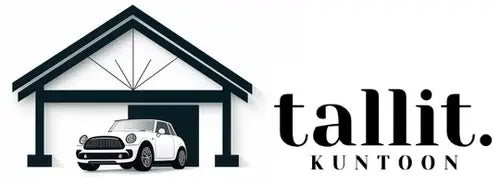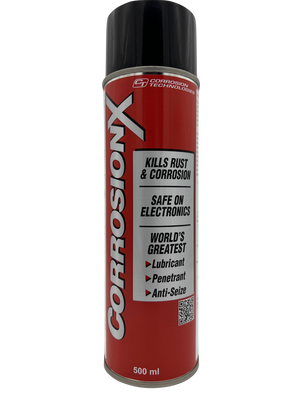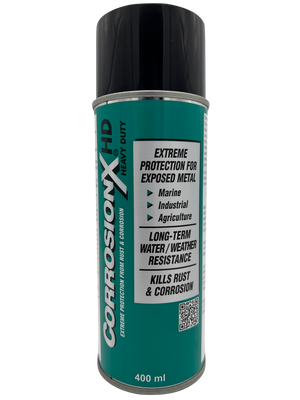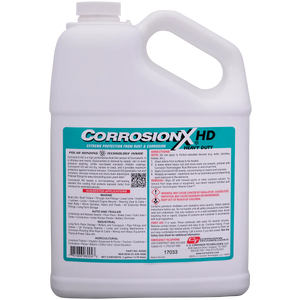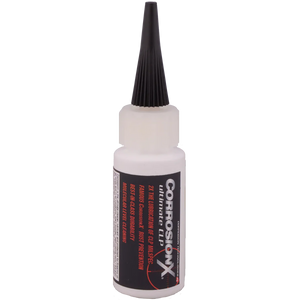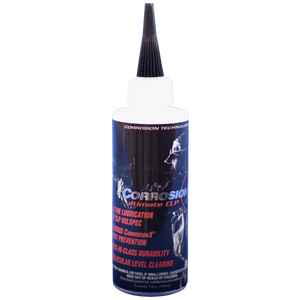Imagine you’re strapped into the cockpit of a fighter jet, the whir of machinery swirling around you, and the horizon stretching out in every direction. The mission is clear and the stakes are high. In these critical moments, the last thing you want to worry about is a malfunctioning weapon system. Whether you’re cruising at subsonic speeds in a sleek fighter jet or transporting essential cargo in a military aircraft, the performance of your on-board weapon systems can truly make or break a mission.
In aviation—especially military aviation—where altitude, speed, and mission-critical reliability take center stage, you simply can’t cut corners on upkeep. That’s where gun oil enters the picture. This unassuming product, often overlooked in the bigger scheme of aviation maintenance, acts as the literal glue—okay, lubrication—that keeps everything from jamming up. While “gun oil” might sound like something only soldiers on the ground care about, it has found a permanent home in the aviation world, ensuring that aircraft weapon systems remain both dependable and efficient.
Over time, aviation technology has become more complex, demanding specialized forms of maintenance. Gun oil isn’t just your standard household lubricant—it is meticulously engineered to meet the punishing demands of high altitude, extreme temperature swings, and breakneck speeds. In fact, certain brands, like CorrosionX for Guns and CorrosionX Aviation, have earned cult-like followings and official endorsements from organizations such as NATO and the U.S. military because they excel in conditions where standard lubricants falter.
What you’ll find in this article is an in-depth and wide-ranging look at the role gun oil plays in aviation maintenance. We’ll dive into the science and engineering behind these lubricants, explore why specialized formulations like CorrosionX are the top picks for aircraft weapon systems, and share best practices for ensuring that you never have to second-guess your weapon systems mid-flight. So, buckle up, and get ready for a deep dive into a topic that might be more critical than you ever imagined.
Gun Oil 101 – Understanding the Basics of Weapon System Lubrication
The Historical Context
If you look back at the evolution of firearms and aviation, you’ll see that maintenance has always been a pivotal concern. From the early days of World War I biplanes—where gunners fired hand-held machine guns over the top of the cockpit—to the modern stealth fighters of today, weapon systems have changed drastically. One aspect has remained constant, however: the need for reliable lubrication.
In the early days of aviation warfare, lubricants were rudimentary, primarily made from animal fats and crude petroleum distillates. These greases and oils offered basic protection but would often freeze or gum up in the cold, high-altitude conditions. As aircraft became more advanced, and as speeds and altitudes soared, the search for high-performance lubricants turned into a never-ending quest.
What Is Gun Oil, and How Does It Differ from Standard Lubricants?
Gun oil typically consists of a carefully balanced mixture of base oils, additives, and corrosion inhibitors. The function is straightforward: reduce friction between metal components while protecting these components from environmental factors such as moisture, salt, dust, and temperature fluctuations. But not all gun oils are created equal.
-
Viscosity: Unlike multipurpose lubricants you might find in a garage or workshop, aviation-grade gun oils maintain a stable viscosity across a broad temperature range. When you’re flying at 35,000 feet, you can’t have your lubricant turn into molasses in sub-zero conditions.
-
Corrosion Inhibitors: Aircraft weapon systems often face harsh environmental conditions: think salt spray during naval operations, desert sand in Middle Eastern theaters, or humidity in tropical zones. Premium gun oils contain corrosion inhibitors that create a protective layer, helping your weapon system resist rust and oxidation.
-
Synthetic vs. Mineral Bases: Modern gun oils often rely on synthetic bases that outperform mineral oils in both low-temperature fluidity and high-temperature stability. Synthetics also offer improved oxidation resistance, which is critical in preventing residue buildup and corrosion.
Why “Aviation Grade” Matters
While you could technically use a generic gun oil in an aircraft, it’s kind of like using low-octane fuel in a high-performance race car. Sure, it might run for a while, but you’re essentially compromising on reliability, longevity, and overall performance. Aviation-grade lubricants are typically tested to military specifications (Mil-Spec) and tested by NATO forces. When reliability can be a life-or-death matter, meeting these rigorous standards isn’t just about bragging rights—it’s about ensuring the mission doesn’t fail because of a mechanical hiccup.
The Challenges of High Altitude and High Speed – Why Specialized Lubrication Is Crucial
Extreme Temperature Swings
Climbing to 40,000 feet in altitude can transform a warm, balmy day on the tarmac into an environment with sub-zero temperatures in a matter of minutes. If a lubricant isn’t engineered to handle this dramatic shift, it can break down or become too viscous. When that happens, weapon systems can jam or misfire, which is the last thing you need in high-stakes scenarios.
On the other side of the temperature spectrum, launching from a scorching desert airfield—where ambient temperatures can exceed 120°F (49°C)—can be equally brutal. A lesser lubricant might thin out too quickly, failing to provide the friction reduction your weapon system needs.
Reduced Air Pressure and Oxygen Levels
Have you ever tried to bake a cake at high altitude? Recipes often change because reduced air pressure affects how ingredients interact. Now, imagine the same principle but applied to complex mechanical systems. At high altitude, there’s less oxygen and lower atmospheric pressure, which can alter how lubricants behave. Some may evaporate more quickly or degrade faster under these conditions. Aviation-formulated gun oils are designed with these quirks in mind, ensuring consistent performance from sea level to the stratosphere.
Incredible Speeds and G-Forces
Speed kills—your weapon system, that is, if it’s not prepared. As an aircraft accelerates or maneuvers at high speeds, the g-forces exert intense pressure on every nut, bolt, and moving part. A subpar lubricant can’t keep up; friction and heat build-up skyrocket, exponentially increasing wear and tear. Specialized gun oils like CorrosionX for Guns not only reduce friction but also form a resilient molecular bond with the metal surfaces, offering an extra layer of protection against extreme mechanical stress.
Corrosion – The Silent Enemy of Aircraft Weaponry
Moisture, Salt, and Atmospheric Chemicals
You might think that moisture would be less of a problem at high altitudes where the air is thin and dry. However, aircraft frequently traverse through clouds, precipitation, and, in naval operations, salt-laden air over oceans. All that exposure can accelerate corrosion when water molecules find their way into tiny crevices in your weapon system.
Salt, in particular, is one of the most aggressive corrosive agents. Sea spray or airborne salt can quickly turn a well-maintained firearm into a corroded paperweight if not properly protected. High-quality gun oils, especially those formulated for aviation, include corrosion inhibitors that actively repel moisture and neutralize the effects of salt and other atmospheric chemicals.
Why Corrosion Is So Dangerous
Corrosion is more than just a cosmetic issue or a bit of rust on the surface. If corrosion sets into the firing mechanism, barrel, or mounts, it can weaken the metal, impede the movement of crucial parts, and drastically reduce the accuracy and reliability of the weapon. In a worst-case scenario, significant corrosion can lead to catastrophic failure.
From an economic standpoint, corrosion also equals expense. Replacing or repairing corroded components can be costly—both in terms of money and downtime. Imagine having to ground a mission-critical aircraft because the weapon systems are compromised due to corrosion. It’s a nightmare scenario that no aviation unit wants to face.
CorrosionX for Guns – Setting the Gold Standard
It’s not just about preventing rust; it’s about doing so in conditions that would make lesser lubricants quake in their boots. CorrosionX for Guns brings to the table a proprietary formulation that penetrates deeply into metal pores, forming a protective layer that’s as enduring as it is efficient. Endorsed by the U.S. military and NATO, CorrosionX for Guns excels in:
- Long-Lasting Protection: Its molecular bond ensures the product clings to metal surfaces, resisting washout, evaporation, and breakdown.
- Broad Temperature Range: From scorching deserts to icy altitudes, it maintains stable viscosity.
- Moisture Displacement: It doesn’t just protect—CorrosionX for Guns can also actively displace water and other contaminants, making it particularly useful in humid or saltwater environments.
CorrosionX Aviation – A Comprehensive Solution for Aircraft Maintenance
Beyond the Gun Systems
While CorrosionX for Guns is a superstar when it comes to weapon system lubrication, CorrosionX Aviation is an all-rounder. Think of it as the older sibling that not only excels at the weapon side of things but can also handle the entire aircraft. From landing gear to avionics, the product is formulated to tackle a wide range of maintenance issues.
One of the biggest advantages of having a single product that covers so many aspects is simplicity. By using CorrosionX Aviation, maintenance crews can streamline their workflows, reduce clutter in their toolkits, and gain peace of mind that they’re applying a product explicitly designed for the demands of flight.
Unrivaled Corrosion Protection
While some might think rust is the only form of corrosion, the reality is far more complex. Aircraft structures can also suffer from galvanic corrosion (where different metals in contact with each other corrode due to electrical potential differences) and oxidation due to exposure to various chemicals. CorrosionX Aviation’s formula is designed to combat a spectrum of corrosive processes, ensuring that your aircraft’s metal integrity remains uncompromised.
Facilitating Safer Operations
A well-maintained aircraft is a safer aircraft. By keeping crucial parts like landing gear, control linkages, and even crucial sensors free from corrosion and mechanical wear, CorrosionX Aviation indirectly contributes to safer flights. For organizations that deal with passenger flights, this safety aspect can’t be overstated. For military operators, it’s essential for mission success. Reliable aircraft mean confidence in the field, whether you’re dropping cargo, carrying personnel, or engaging in combat.
Endorsements and Official Approvals
CorrosionX products aren’t just random lubricants claiming “military grade” credentials. They have been vetted and approved by major military organizations, including NATO, and have a longstanding track record with the U.S. armed forces. That’s a significant badge of honor in the aviation world, considering how strict military testing protocols can be. These endorsements confirm that the product meets and exceeds exacting standards for durability, performance, and safety—a trifecta that’s essential in aviation contexts.
Civilian vs. Military Aviation – The Role of Gun Oil Across Different Sectors
Civilian Aviation Essentials
In civilian aviation—whether we’re talking about small private planes or huge commercial jets—the priority often lies in safety, fuel efficiency, and minimizing maintenance costs. You won’t typically find heavy artillery on a Cessna used for weekend flights, but you might still have a firearm for security, or specialized equipment that needs lubrication and corrosion protection.
- Reduced Maintenance Costs: High-grade gun oil and aircraft-specific lubricants help reduce the frequency of part replacements. Components last longer, thanks to reduced friction and corrosion.
- Enhanced Reliability: Think about flight schools, private aviation clubs, or tour operators—downtime due to mechanical failures can be both financially damaging and a threat to safety. High-quality lubrication is a small but vital investment toward operating smoothly.
Military Aviation – High Stakes, No Compromises
When it comes to military aviation, there’s no room for error. Weapons must fire every time. Landing gear must deploy even in the harshest environments. Avionics must remain functional whether you’re flying in desert sands or cruising over salt-laden seas. Here’s where CorrosionX for Guns and CorrosionX Aviation truly shine:
- Combat-Ready Resilience: From counterinsurgency aircraft to supersonic jets, these lubricants ensure that the weapon systems are battle-ready and free from corrosion and jamming.
- Versatility: Modern military operations can shift from desert to arctic conditions in a matter of weeks. Having a single lubricant solution that can handle these extremes simplifies logistics and ensures continuity in performance.
- Global Deployments: Military forces are deployed worldwide, encountering different climates and terrains. A robust gun oil that’s tested and proven across a variety of conditions is indispensable.
Overlapping Benefits
At the end of the day, both civilian and military aviation benefit from the same core strengths of specialized gun oil: lubrication, corrosion resistance, and reliability. The differences lie in scale, operational environment, and regulatory oversight. However, whether you’re flying commercial or cargo planes or performing high-stakes military missions, ensuring the integrity of your aircraft’s systems will always be at the top of the checklist.
Best Practices for Applying Gun Oil in Aircraft Weapon Systems
Step-by-Step Maintenance Approach
- Initial Cleaning: Before you even think about applying new lubricant, thoroughly clean the weapon system to remove any existing dirt, carbon residue, or old lubricants. Residue can inhibit the new lubricant from bonding effectively to the metal surfaces.
- Inspection: Carefully inspect all components for signs of wear, corrosion, or damage. If you spot any suspicious areas, address them immediately—whether that means replacing a part or treating the corrosion.
- Application: Apply the gun oil according to the manufacturer’s instructions. In the case of CorrosionX for Guns, a little goes a long way. Let the product seep into the metal pores to form that crucial protective layer.
- Reassembly and Testing: Once everything is lubricated, reassemble the weapon system and perform a functional test. Check for smooth operation, ensuring that each part moves seamlessly.
Reapplication Timelines
One of the selling points of premium products like CorrosionX is their longevity. However, “long-lasting” doesn’t mean “forever.” Factors like operational intensity, exposure to harsh climates, and the frequency of missions can accelerate the need for reapplication. For instance, if an aircraft sees heavy use in tropical, humid regions, a more frequent lubrication schedule is advisable than in dry, temperate environments.
Storage and Handling Tips
- Proper Storage of Lubricant: Keep your gun oil in a temperature-controlled environment when possible. Extreme heat can degrade certain chemical properties, and freezing temperatures can make the product thicker than intended before application.
- Personal Protective Equipment (PPE): When applying lubricants, it’s good practice to use gloves and safety glasses. Though many modern lubricants are less toxic than older formulations, you still want to avoid prolonged skin contact or accidental splashes into your eyes.
- Labeling and Tracking: For professional maintenance crews, keeping records of application dates, part numbers, and usage conditions can help optimize the maintenance cycle. Detailed logs also make it simpler to troubleshoot issues if they arise.
The EEAT Factor – Experience, Expertise, Authority, and Trust in Aviation Maintenance
Why EEAT Matters for Aviation Content
In aviation, "experience, expertise, authoritativeness, and trustworthiness" are more than a marketing buzzwords.
Especially when it comes to aviation maintenance—experience and expertise can’t be faked. Mistakes can lead to dire consequences, from weapon jams in critical moments to structural failures causing grounded aircraft.
Building Trust Through Credentials and Results
CorrosionX has built its reputation not just by slapping a “military-grade” label on its products, but by proving it time and time again in the field. Endorsements from NATO or the U.S. military aren’t handed out lightly. These endorsements are a testament to the brand’s authority and expertise.
Pilots, aircraft technicians, and maintenance engineers also share stories and best practices within the aviation community. Word-of-mouth recommendations, success stories from actual missions, and data from real-world tests enhance the trust factor. When you combine official approvals with anecdotal evidence, you get a thorough endorsement that meets EEAT criteria in real-life, tangible ways.
Human Expertise in a High-Tech World
These days, it’s easy to rely on algorithms, sensors, and computer systems to tell you when a part needs maintenance or when a lubricant is running low. But human expertise—people physically inspecting weapons, noticing that a bolt feels off, or hearing that slight squeak that a sensor might miss—remains an irreplaceable asset. Good maintenance requires a blend of technology-driven diagnostics and hands-on know-how.
So, while advanced systems can alert you to potential issues, it’s still up to trained professionals to decide which product best suits the job. When those professionals repeatedly pick CorrosionX for Guns or CorrosionX Aviation, that’s the kind of boots-on-the-ground validation no digital algorithm can replicate.
Putting It All Together – A Comprehensive Overview and Key Takeaways
Recap of the Key Points
- Gun Oil Is Essential: In aviation, weapon system reliability can be a life-or-death matter. Proper lubrication ensures smooth operation, reduced friction, and extended component life.
- High Altitude, High Speed, High Stakes: Aircraft weapon systems face extreme temperature shifts, reduced air pressure, and intense mechanical stress—factors that demand specialized gun oil.
- Corrosion Is the Silent Killer: Moisture, salt, and other environmental elements accelerate rust and oxidation, which can cause catastrophic failures if not addressed.
- CorrosionX for Guns and CorrosionX Aviation: With proven performance in extreme conditions and endorsements from NATO and the U.S. military, these products offer unparalleled protection and lubrication for both weapon systems and broader aircraft components.
- Best Practices: Regular cleaning, inspection, and timely reapplication are crucial. High-quality products perform best when accompanied by diligent maintenance routines.
- Experience, Expertise, Authoritativeness, and Trustworthiness: These translate directly into safer, more reliable flight operations.
Practical Tips for Operators and Technicians
- Conduct Regular Drills: Simulate loading and firing of your weapon systems under controlled conditions to ensure everything is functioning smoothly.
- Invest in Quality Tools: A good lubricant is only part of the puzzle. Use proper cleaning tools, brushes, and protective gear to maintain your weapon systems effectively.
- Stay Updated on Regulations: Both civilian and military aviation are subject to evolving regulations regarding maintenance protocols and product certifications. Keep an eye out for updates from authorities and manufacturers.
- Document Everything: A logbook documenting every maintenance action—what was done, when, and by whom—can make your life infinitely easier, especially during audits or troubleshooting.
The Financial and Safety ROI
High-quality gun oil is an investment that pays for itself. By reducing wear and corrosion, you’re essentially prolonging the life of expensive components, cutting down on replacement costs, and minimizing the risk of sudden failures. In a world where a single grounded aircraft can result in massive financial losses (and in the military realm, potential tactical disadvantages), the ROI on reliable lubrication is crystal clear.
Moreover, in aviation—an industry defined by stringent safety protocols—the value of a product that reduces the risk of catastrophic failure cannot be overstated. It’s not just about money; it’s about protecting lives, ensuring mission success, and maintaining public trust.
Frequently Asked Questions (FAQs)
Why is CorrosionX for Guns ideal for aircraft weapon systems?
CorrosionX for Guns is formulated to provide superior lubrication and corrosion resistance, making it perfect for the harsh and high-demand conditions faced by aircraft weapon systems. Its proven track record with the U.S. military and NATO reinforces its reliability.What’s the difference between CorrosionX for Guns and CorrosionX Aviation?
CorrosionX for Guns is optimized for firearm lubrication and protection, focusing on weapon systems. CorrosionX Aviation, on the other hand, is a multipurpose product designed for broader aircraft maintenance, covering everything from avionics to landing gear.Can CorrosionX Aviation be used on civilian aircraft?
Absolutely! CorrosionX Aviation is versatile enough for both civilian and military aircraft. It helps protect various systems against corrosion and mechanical wear, making it suitable for general aviation, commercial fleets, and everything in between.How often should gun oil be applied to aircraft weapon systems?
There’s no one-size-fits-all answer. The frequency depends on operational environments, such as humidity levels, salinity in the air, and the intensity of use. In harsher conditions, more frequent reapplication is recommended.Why is lubrication so important in high-altitude aviation?
At high altitudes, temperatures can plummet, air pressure drops, and mechanical parts experience unique stress. Lubrication is essential to keep weapon systems from freezing, seizing, or wearing down prematurely, ensuring reliable performance when it matters most.Is CorrosionX safe for other parts of the aircraft besides the weapons?
Yes. Both CorrosionX for Guns and CorrosionX Aviation are designed to be non-conductive and safe for a range of materials when applied correctly. Just make sure to follow the manufacturer’s guidelines for best results.
Conclusion – When Every Shot Counts
If there’s one truth that transcends the hustle and bustle of hangars and military bases worldwide, it’s that reliability is the currency of aviation. The skies can be unforgiving, and the missions unforgiving still. Aircraft weapon systems must function seamlessly—no excuses, no second chances. Gun oil might seem like a small piece of the giant aviation maintenance puzzle, but in reality, it’s the consistent application of such specialized products that ensures everything holds together under the most demanding conditions.
CorrosionX for Guns has staked its reputation on delivering top-tier lubrication and corrosion protection specifically for firearms. CorrosionX Aviation broadens that scope, ensuring the entire aircraft benefits from cutting-edge chemical engineering. Together, they form a comprehensive shield against the ravages of moisture, temperature extremes, and mechanical strain—challenges that define the life of an aircraft, especially in military contexts.
So, the next time you see a mechanic or an engineer carefully applying gun oil to an aircraft weapon system, know that there’s a lot more at stake than meets the eye. It’s about safeguarding missions, assets, and, ultimately, lives. With the right product and the right maintenance regimen, you’re not just greasing the gears—you’re ensuring that every shot counts, every flight is safer, and every mission stands a better chance of success.
After all, in the high-stakes world of aviation—where altitude, speed, and ballistic capability converge—no one can afford for a weapon system to jam. Trust the proven expertise behind CorrosionX, and fly with confidence that your aircraft’s weapons are primed, protected, and ready to perform in any environment. Safe flights and successful missions to you, wherever you may roam among the clouds!
